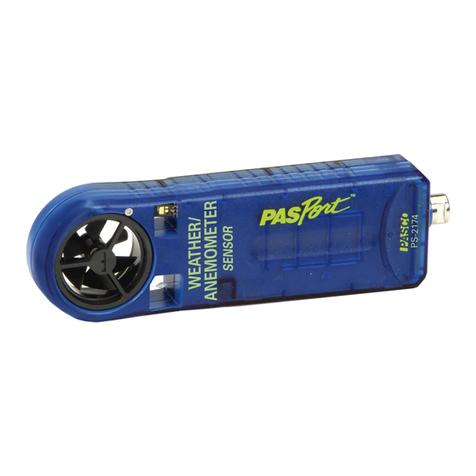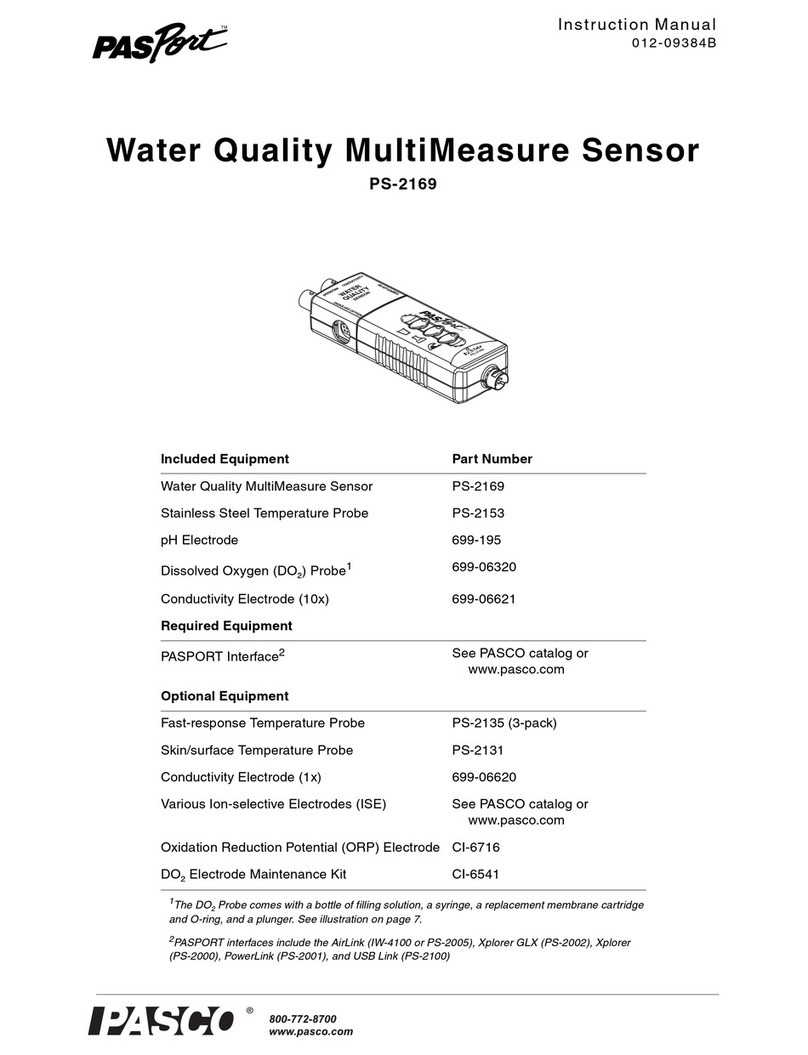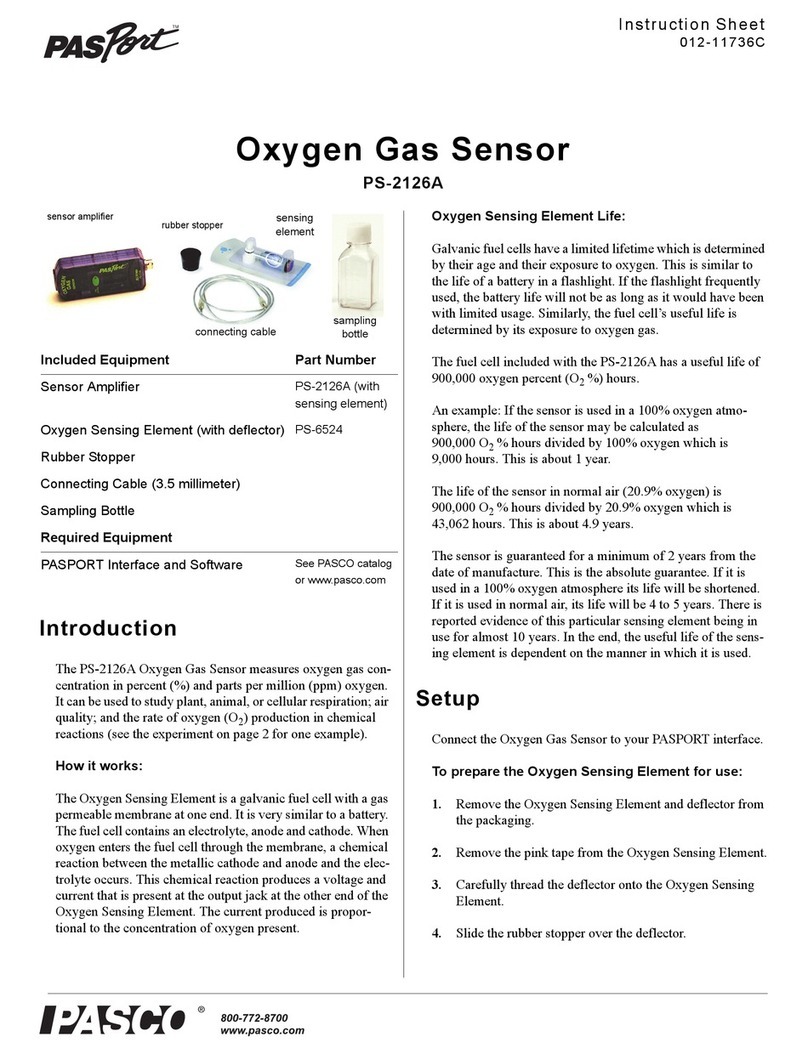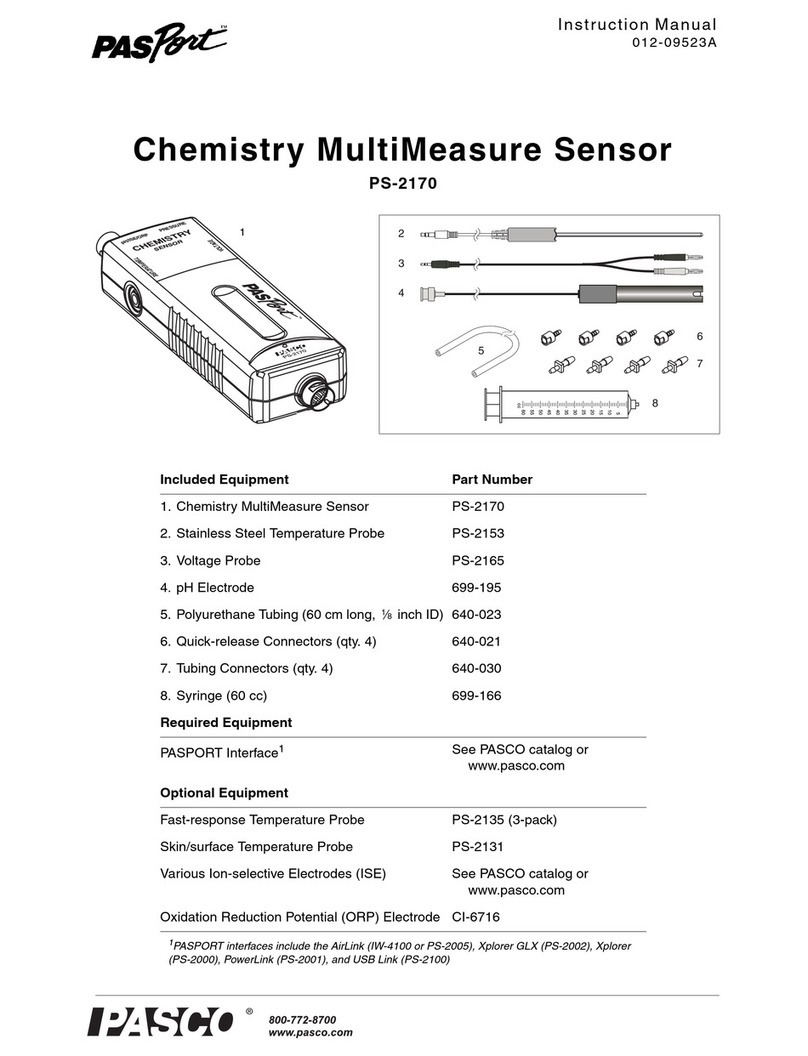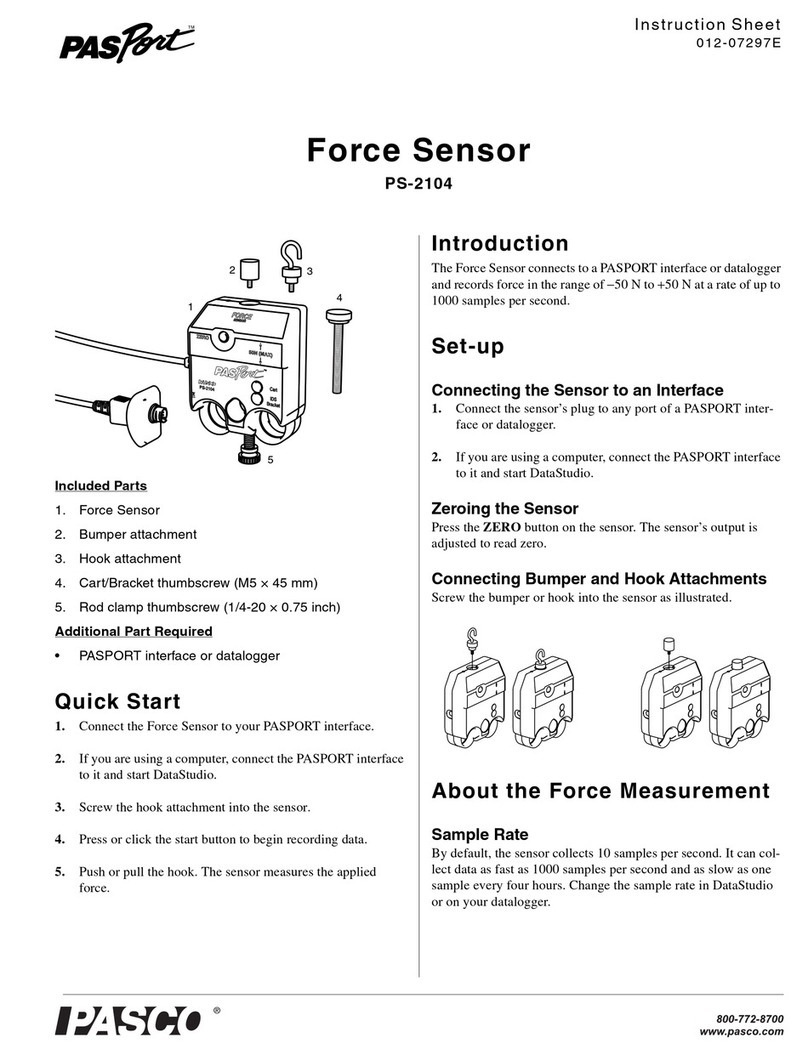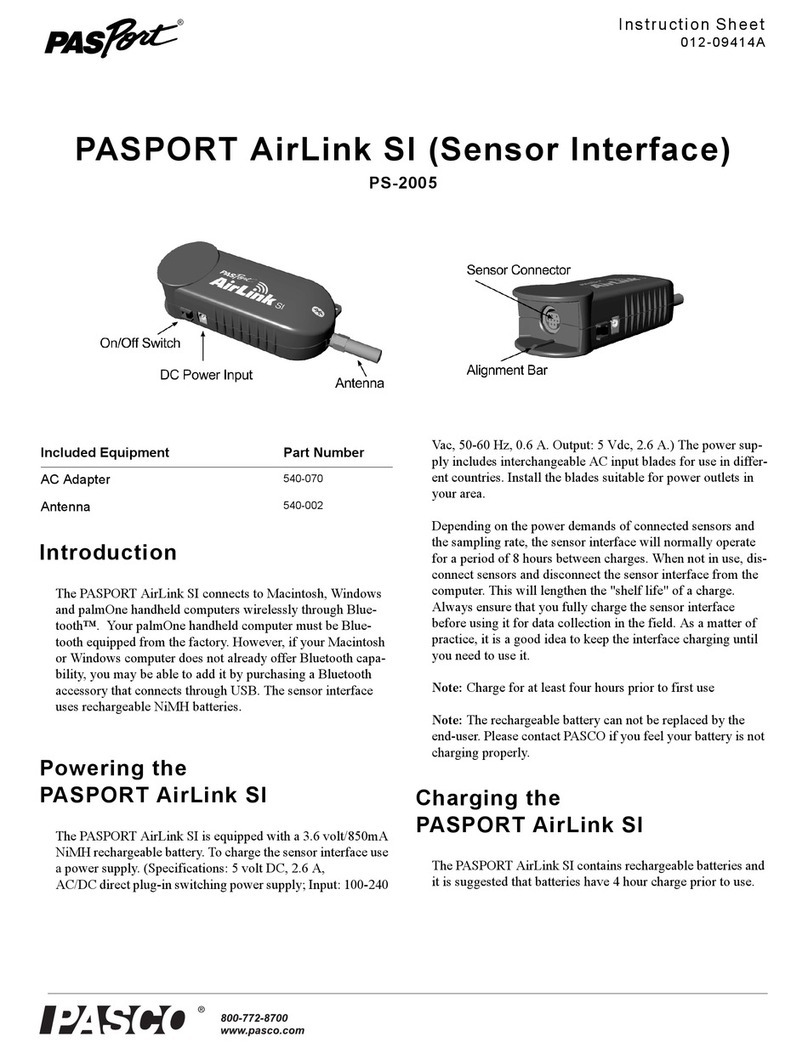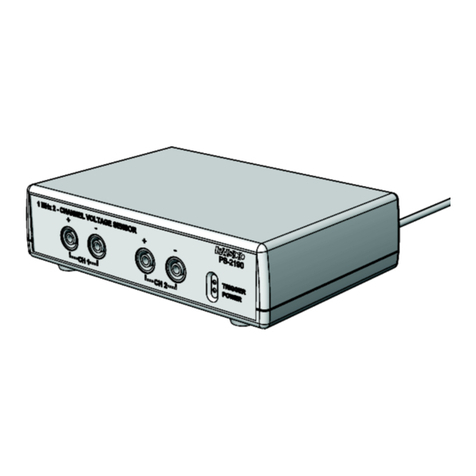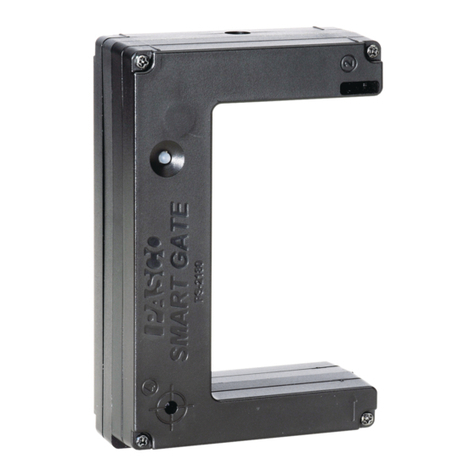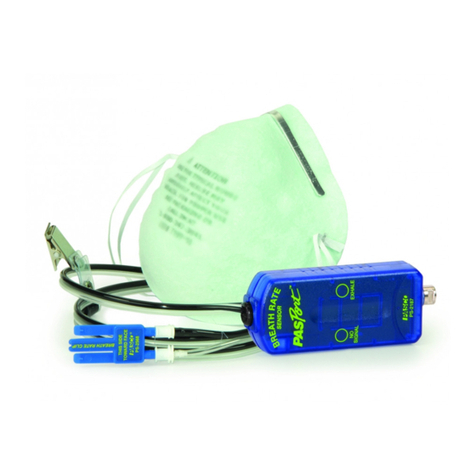
Soil Moisture Sensor 012-10538C Introduction
2
material and air pockets. A typical volumetric ratio would be 55% solid material
and 45% air pockets. As water enters the soil, the air pockets begin to fill with
water. An example of 10% volumetric water content would be 55% solid
material, 35% air pockets, and 10% water. The maximum volumetric water
content would therefore be 45%. All the air spaces would be filled with water
and the soil would be saturated.
About the Sensor
The Soil Moisture Probe uses capacitance to measure the dielectric permittivity
of the surrounding soil. The volume of water in the total volume of soil most
heavily influences the dielectric permittivity because the dielectric of water (80)
is much greater than the other constituents of the soil (mineral soil, 4; organic
matter, 4; air, 1). Thus, when the amount of water changes in the soil, the Soil
Moisture Probe will measure a change in the capacitance (from the change in
the dielectric permittivity) that can be directly correlated with a change in water
content. Circuitry inside the Soil Moisture Probe changes the capacitance
measurement into a proportional millivolt output.
The Soil Moisture Probe averages the volumetric water content over the entire
length of the probe, with a zone of influence about 2 cm around the probe. The
zone of influence is with respect to the flat surface; there is little or no sensitivity
at the edges of the probe. The electromagnetic field (EM) produced by the
probe decreases with distance from the probe surface.
Installing the Soil Moisture Probe
When selecting a site for installation of the probe, it is important to remember
that the soil adjacent to the probe’s surface has the strongest influence on the
sensor reading. Therefore, any air gaps or excessive soil compaction around
the probe can profoundly affect the readings. Because the probe has a gap
between its prongs, it is also important to consider the size of the media you
are inserting the probe into. It is possible to get sticks, bark, roots, or other
material stuck between the probe prongs, which will adversely affect readings.
Finally, be careful when inserting the probe into dense soil, as the prongs will
break if excessive sideways force is used when pushing them in.
When installing the probe, it is best to maximize contact between the probe and
the soil.
Vertical Orientation
Insert the probe into the soil, making sure that the probe is completely buried at
least 3 cm below the soil surface. The tip of each prong is sharp -
be careful!
The probe may be difficult to insert into extremely compact or dry soil. Carefully
loosen the soil before inserting the probe. Never pound the probe into the soil!
Make sure that there is good contact between the probe and the soil. Use your
fingers and fist to tamp the soil down around the probe.
Horizontal Orientation
The probe can be oriented in any direction. However, orienting the flat side
perpendicular to the surface of the soil will minimize the effects of downward
The copper traces used to measure
water content are sealed between
two pieces of epoxy-impregnated
fiberglass. The electromagnetic
(EM) field generated by the traces
travels through the fiberglass and
into the soil surrounding the probe.
Do not install the probe adjacent to
large metal objects such as metal
poles or stakes. This can attenuate
the probe’s electromagnetic field and
adversely affect output readings.
